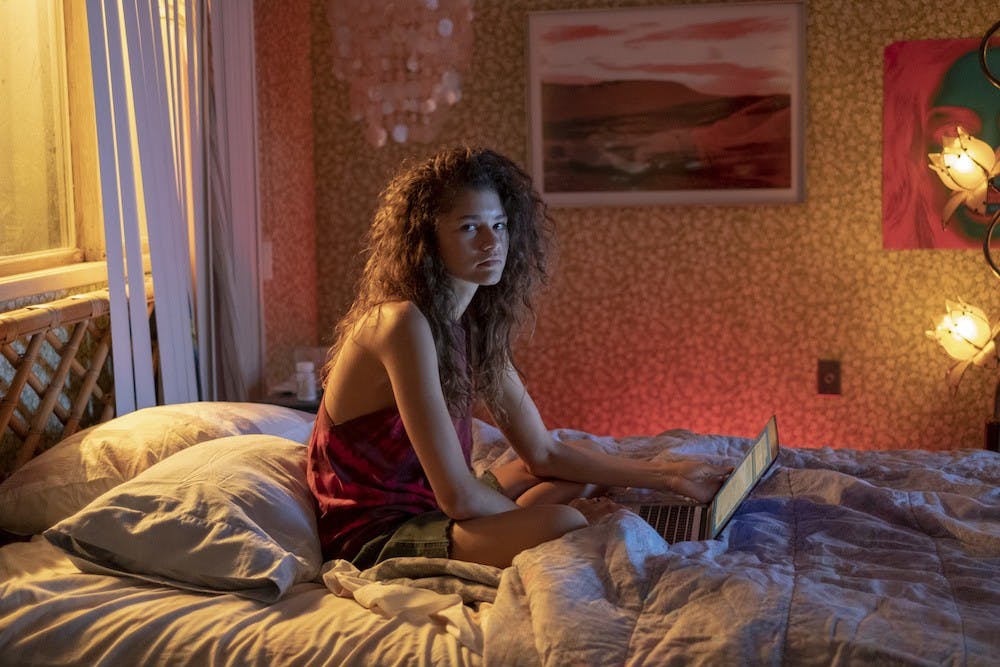Like many celebrities we direct our attention towards, Zendaya began on Disney—unlike many, she stayed there. Taking breaks to obtain runner–up on “Dancing with the Stars”, play Michelle in the latest “Spiderman” series, and appear in a Bruno Mars music video, the 22–year–old has had her hands full curating a family–friendly image for her audience.
Her latest project is not one for the family.
Starring as Rue in HBO’s “Euphoria”, the actress’s character is typified as a teenage drug addict, abandoning her sobriety following rehab and reimmersing herself into the world of narcotics. She encapsulates the perfectly problematic protagonist—the type that you root for to win, yet still causes you to shield your eyes in disappointment. Each episode spans for a full hour, and often times has you holding your breath waiting for the coveted sixtieth minute to pass.
This high school is not the polished academy on glossy pamphlets. Here, fan–fiction writers flock to make money as cam–girls, nudes are exchanged as the currency of love, and new students slash their arms with a knife to prove a point to the weekend party crowd. Here, you are forced to pore over the memories of your own high school experience, trying to find parallels with these characters; some of us do not have to look as hard as others. Rue (Zendaya) finds herself in the middle of all of this, managing to have only one true friend yet narrating every character’s storyline. Halfway through the initial episode emerges a rape scene difficult to stomach, and is never discussed again. A character embraces a life–threatening brush with fentanyl at the age of seventeen. What does it mean for a show riddled with such convoluted, controversial themes to be at the forefront of today’s television?
Unlike previous shows that have attempted to depict “the real teenage life” (i.e. “Thirteen Reasons Why”) “Euphoria” is doing something earnest. Rue’s story of addiction is based on creator Sam Levinson’s own narrative, and realistically displays the thought process behind a good heart with bad patterns. It addresses adolescent culture without trying to punish participants. Zendaya did not choose to pick up this project to announce her deviation from Disney’s sacred reputation; she chose to portray the world that Disney neglects to relay. Scenes such as the locker–room in the second episode are unnerving but not unrealistic, and Levinson’s choice to bend the rules of television in turn bends our picture–perfect image of growing up. Of course, this is not to declare that high school is a dark, drug–riddled atmosphere—it just shows that it can be.
“Euphoria” does not have an obnoxiously obvious agenda. It is not pushing the “It gets better” mantra, nor is it trying to say the root of teenagers’ problems is their overtly mean behavior towards one another. It is also not meant to be an exposé for parents to pay closer attention to where their kids go at night. It is meant to tell a story in its most authentic form, relying on the cast it harbors to fill in the blanks a team of adult writers fails to occupy. Just like those who are still growing up in today’s age, it is unapologetic. As a teenager today, that is all we can ask for.
You can catch “Euphoria” Sunday nights at 10 P.M., a show recommended to watch with friends—it tends to raise discussion. Viewer discretion is advised and reminded at the start of each episode, as many scenes can be difficult to witness.

